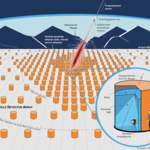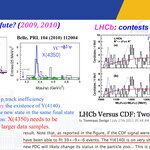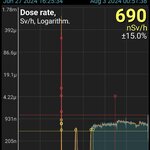Lorem ipsum dolor sit amet. Sed similique vero ut laboriosam obcaecati ab assumenda iste. Et magnam velit sit doloribus cupiditate ut modi praesentium non dicta doloribus nam internos magnam aut nobis quis ad galisum amet. Vel internos consequuntur qui architecto consequatur ut sunt fugit et fugit quisquam ut quia ducimus et excepturi nihil eum minus error. Nam sunt ipsa est sint voluptas At eveniet velit ut maxime harum aut possimus saepe ut nobis labore aut voluptas quia?
Et asperiores ipsam ut nisi possimus et excepturi deleniti. Qui libero voluptatem et doloremque natus ut minus…
Physics

I recently got engaged in a conversation with a famous retired mathematician / cosmologist about the phenomenology of Higgs bosons in the Standard Model of particle physics, and very soon we ended up discussing a graph produced by the CMS collaboration at the CERN Large Hadron Collider, which details the result of searches of Higgs boson pairs in proton-proton collisions data. The conversation -and in particular the trouble I had in making sense of the graph with my interlocutor- clarified to me that the way we present those graphs, which summarize our results and should speak by…

These days I am in the middle of a collaborative effort to write a roadmap for the organization of infrastructures and methods for applications of Artificial Intelligence in fundamental science research. In so doing I wrote a paragraph concerning benchmarks and standards. I thought this could be interesting for readers here, so I reused the text and inserted some explanations. It serves as a reminder of what I wrote initially, as the paper is a collaborative one so the text will then undergo many other iterations and change significantly...
Benchmarking and Standards for AI in Fundamental…

Last week I was in Valencia, to attend the fourth MODE Workshop on Differentiable Programming for Experiment Design. It was a great meeting, with 80 participants eager to discuss their latest results in application of complex deep neural network models and similar concoctions to problems in fundamental science. Of particular significance is the fact that the average age of the participants was somewhere between 25 and 30 years. In my opening speech I made the point that given the downward trend of that number, soon we will be running a kindergarden. But nobody laughed - these kiddos are…

Theories in physics come and go, some are popular yet entirely speculative and fade away quickly, like String Theory, and Superdeterminism, while others continue to provide hope for a framework that can unify gravity at the very large and very small levels.
That is where the Standard Model exists. The Standard Model, proposed in the 1970s, believes that fundamental particles are governed by four fundamental forces. In the Standard Model, stable matter in the universe is made of quarks and leptons of six particles each, in pairs, what physicists call “generations”. The most stable…

The SWGO Collaboration (SWGO stands for Southern Wide-Field Gamma Observatory) met this week in Heidelberg, hosted by the Max Planck Institute for Nuclear Physics (MPIK) to discuss progress in the many activities that its members are carrying forward to prepare for the finalization of the design of the observatory and the following construction phase. As a member of the collaboration I could learn of many new developments in detail, but I cannot discuss them here as they are work in progress by my colleagues. What I can do here, however, is to describe the observatory as we would like to…

If your theory of everything has tensors set equal to scalars then it is wrong. Simply put, a scalar is a single number that is widely recognized. A vector consists of 3-4 numbers arranged in a specific sequence, typically representing coordinates and time. A tensor is an array of these numbers in a 3x3 or 4x4 matrix. There are nuanced details to this; for instance, in certain complex scenarios, a set of numbers can be defined where scalars are represented as pairs of numbers, like complex numbers in the form of a+bi. However, to maintain simplicity, we will not delve into those…

I will start this brief post with a disclaimer - I am not a nuclear physicist (rather, I am a lesser being, a sub-nuclear physicist). Jokes aside, my understanding and knowledge of the dynamics of high-energy nucleus-nucleus collisions and the phases of matter that can exist at those very high densities and temperatures is overall quite poor.
"But why," you might be curious to ask - "are not nuclei and quarks both governed by the strong interaction, QCD? What makes you sapient on the latter and ignorant of the former?" Well, nuclei are very complex, multi-body systems that we really…

I am presently in Cairns, sitting in a parallel session of the "Quark Confinement and the Hadron Spectrum" conference, where I am convening a session on Statistical Methods for Physics Analysis in the XXI Century, giving a talk on the optimization of the SWGO experiment, and playing the piano at a concert for the conference, in addition of course to visiting the area. Anyway, all of the above is too much information to you, as this post is about something else.
In the session, the speaker is discussing some new physics models that involve the existence of a particle called the "dark photon".…

Last week I traveled from Venice to Tokyo through Zurich, and during the flights I could do some more tests of the RadiaCode 103 - the nice spectrometer for gamma radiation I have been playing with as of late (for a couple of earlier posts and tests see here and here). This time I was curious to see not only how the radiation increases as you raise your elevation above sea level (something that I observed already a long time ago with a different radiation detector, and then again with another unit a few years later), but rather see what the energy spectrum would look like - something that the…